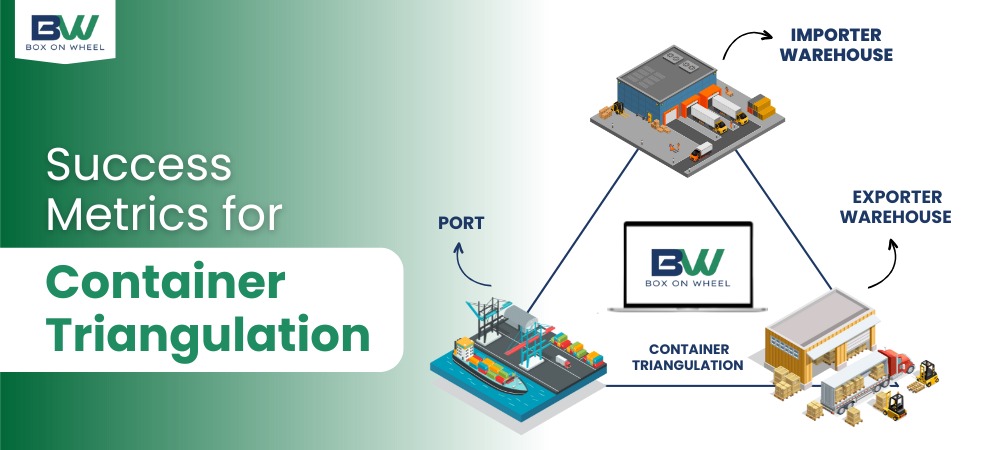Businesses involved in the import and export of goods are always looking for ways to cut costs and improve efficiency. A method rapidly gaining popularity in logistics is container triangulation. This is a simple idea where a shipping container, instead of being sent back empty after delivering imported goods, is immediately used for exporting goods. It is also called “street turns.
Let us check out some proven success numbers and see how container triangulation helps businesses grow, especially in India’s logistics sector.
Cost Efficiency
One of the biggest reasons companies use container triangulation is to save money. When businesses send containers back empty, it’s like paying for an extra trip for no reason. Container triangulation from Box on Wheel helps companies avoid this. Research shows that companies can reduce logistics costs by up to 30% when they reuse containers right away for export.
For instance, businesses that use triangulation have reported savings of around 11% to 14% on trucking costs and 8% to 10% less lead time (the time it takes to deliver goods). These savings are huge because companies can then use the money for other things like expanding their business or improving their services.
Environmental Benefits
Another major impact of container triangulation is that it’s good for the environment. Did you know that about 40% of shipping containers return empty? This wastes a lot of fuel and increases pollution. By reusing containers, companies can reduce fuel consumption and cut CO₂ emissions by up to 20% per trip.
This means a truck that would have otherwise emitted a lot of pollution during an empty trip can now help cut 12.5 metric tons of carbon emissions every year. That’s like taking many cars off the road for good! Not only does this help companies meet environmental rules, but it also makes them look better to customers who care about the environment.
Faster Operations
When companies use triangulation, their operations become smoother and faster. In the logistics world, every minute counts, and the faster goods move, the better it is for everyone. Logistics companies don’t have to waste time sending empty containers back.
For example, a renowned company managed to cut the average container turnaround time from 34 days to just 4 days. This means they could use the same container more often, increasing their overall profits. Faster operations allow companies to serve more customers and boost revenue.
The Future of Indian Logistics
India’s logistics sector is growing quickly. As the country trades more with other countries, there is a greater need to reduce logistics costs and manage resources better. Container triangulation can help businesses take advantage of this growth.
Right now, India’s transportation and logistics sector is expected to grow at 4.5% every year until 2050. That means more goods are going to be moved around the country and across borders. Businesses can stay ahead of the competition and be ready for future demands by using smart strategies like container triangulation. It helps them move goods faster, save money, and reduce their environmental impact.
Conclusion
To wrap it up, container triangulation is a smart strategy that can change the way businesses handle imports and exports, especially in India. This method makes it more efficient for companies to lower their costs, speed up their operations, and reduce their carbon footprint.
As the logistics industry continues to evolve, container triangulation will likely become a key part of modern supply chains. It allows businesses to not only grow but also contribute to a greener, more efficient economy. With India’s logistics sector expected to grow, companies that embrace triangulation will be well-positioned to survive and grow in a competitive global market.
In simple words, container triangulation is like getting more work done with the same effort. It’s about being smart with resources, and in the long run, it can boost business growth, improve sustainability, and keep customers happy.
Sources:
[2] https://dspace.mit.edu/handle/1721.1/130975
[3] https://ctl.mit.edu/pub/thesis/developing-digital-solution-container-triangulation-china
[4] https://dahnay.com/the-promise-of-container-triangulation-in-global-supply-chains/
[5] https://www.scmr.com/article/developing_a_digital_container_triangulation_solution_in_china
[6] https://www.ncbi.nlm.nih.gov/pmc/articles/PMC7970895/

